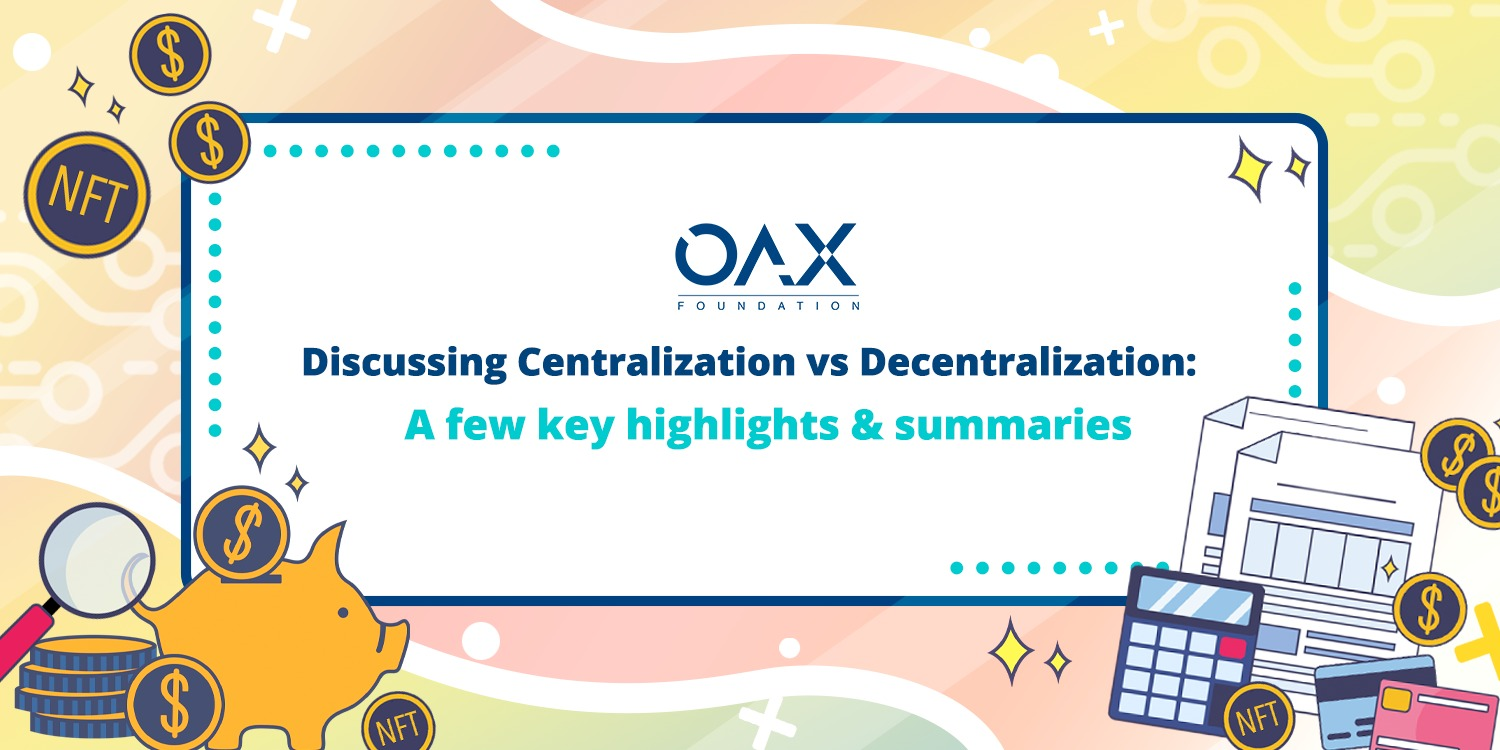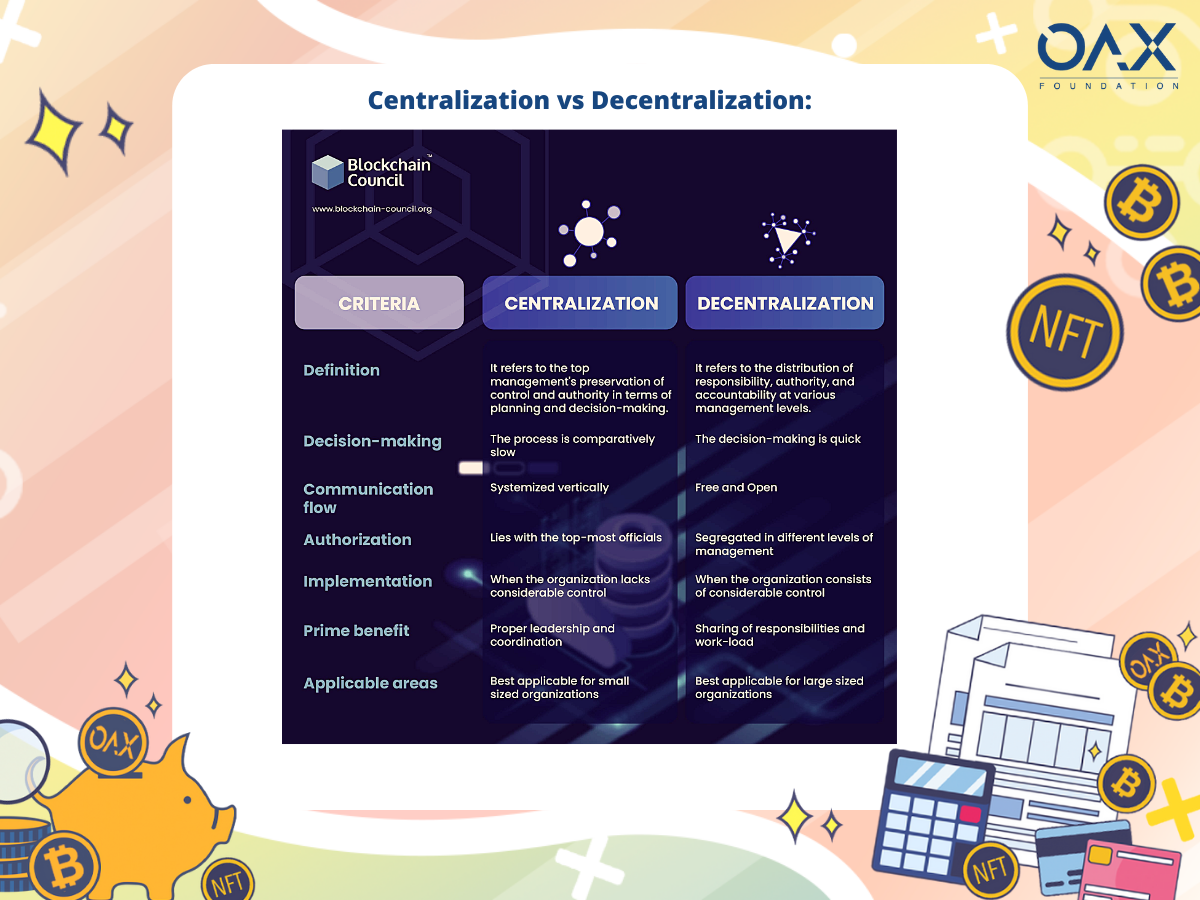
Centralization vs Decentralization
Three years ago we spoke about “What is DeFi”, and of course, since then the industry is well underway, building and developing. But despite the many articles and discussions that are out there in the market, there still seems to be confusion for some regarding the parameters of DeFi; but more importantly, the discussion when it comes to decentralization vs centralization. Considering DeFi in 2022, which has seen a record number of exploits and attacks, we mustn’t ignore the need for projects to work on tightening security and trust around DeFi for the space to reach the masses.
There are some summaries that do a fantastic job of highlighting the differences between the two, often within an exchange setting. So rather than do an in depth review of the two which so many have done before us, we’ll summarize some of the key points.
Who’s in Control?
The defining factor behind whether an exchange is centralized or decentralized resides with who has control over the tokens and where the tokens sit. Centralized exchanges means you give control to the exchange to manage your tokens: storing it, keeping it safe and (at times) giving you certain benefits at times too. The convenience you gain over not having to remember where you put your cold wallet, or which device you installed your self-custody hot wallet (as well as remembering the secret phrase) in return for being able to select a “forgot your password” option will be the difference of control.
Of course it’s not a new concept. If you had stacks of cash in your house instead of the bank, you’ll be responsible for providing the security, remembering the code for your safety deposit box, or feeding the guard dog. For most, it seems too troublesome, and you want someone else to “take care of it for you”. Hence you choose to place it in a bank. Banks are great until they’re not. Even if we don’t go to the extreme of saying that a bank fails, (and of course that extreme has happened before) let’s just think of when the website is down for maintenance or the ATM runs out of money, or you hit your daily withdrawal quota.
These are small inconveniences that we may gripe about when the timing or inconvenience doesn’t suit our schedules, but the general population would gladly put up with these issues in return for the many benefits that banks give us.
And for many, the centralized option indeed is a better choice for users who are not ready to take on the responsibility for being in control of their funds. The once in a blue moon occasion of a bank going under, or a platform like FTX taking customer funds and then collapsing, leaving their customers empty-handed seems a small enough risk versus the much higher likelihood of the customer forgetting their password for an account not frequently used.
The liquidity, speed that transactions go through, smoother and less intimidating user experience, as well as regulator buy-in are all benefits of centralized platforms and they make very strong arguments as to why users should go that route. But if the quiet question of “what if” begins to play at the back of your mind, then there is another option available to users. The decentralized option.

If the interest is there to learn about a secondary option, and there’s just enough doubt playing in your mind, we urge our community members to start with baby steps.
Firstly, consider your password options. You will need a method to store your passwords securely, and we would highly recommend using a password manager. It may seem strange for us to list this as the very first item to consider in the context of a “centralized vs decentralized” conversation; but we start here for two reasons. When holding your own keys, the onus is on you to remember the secret key phrase, and password. There is no reset, there is no forget password button, no one to ask to share what is on their system. And even the best of us will at some point or another forget a scarcely used password. (If your response to that is “No I won’t! I use the same password for everything!” we strongly recommend you reconsider doing that).
After, and only after, you’re comfortable with using a secure password storage method would we then suggest for you to start looking into creating a self-custody wallet. We’ll leave the argument of hot vs cold wallet to you, there are many options in the market. The idea is simple– get comfortable with using a self custody wallet. Even if you choose to use a centralized exchange that gives you the various benefits that we outline above, the storing of tokens should still remain within your own control.
Also, do remember that your assets are entirely within your control - if you’re uncomfortable with the idea of going fully decentralized or centralized, it could also be a good idea to have a portion of your assets on both. For active traders, having some funds on centralized exchanges makes it easier to execute certain trade orders, participate in the exchange’s staking programs, and take quick actions when needed.
Lastly, there’s more than one way to embrace decentralized technology, aside from exchanges, and getting started with taking the responsibility of your assets is a good place to begin.
Our recent launch of Notifs was created with this in mind. What happens once you pull your assets off the centralized exchange and you need a simple way to keep track of your portfolio so you know exactly what you have where? We wanted a simple solution that helps users interested in taking the responsibility and working towards decentralization. And while we’re eagerly looking forward to bringing more features on to the app, the basic idea of helping users keep track of their overall portfolio, across wallets and networks is something that has set the direction of our development. We look forward to hearing what our community thinks is important to staying on top of this industry– find us on our social media channels if you have any good ideas that we should add on!


